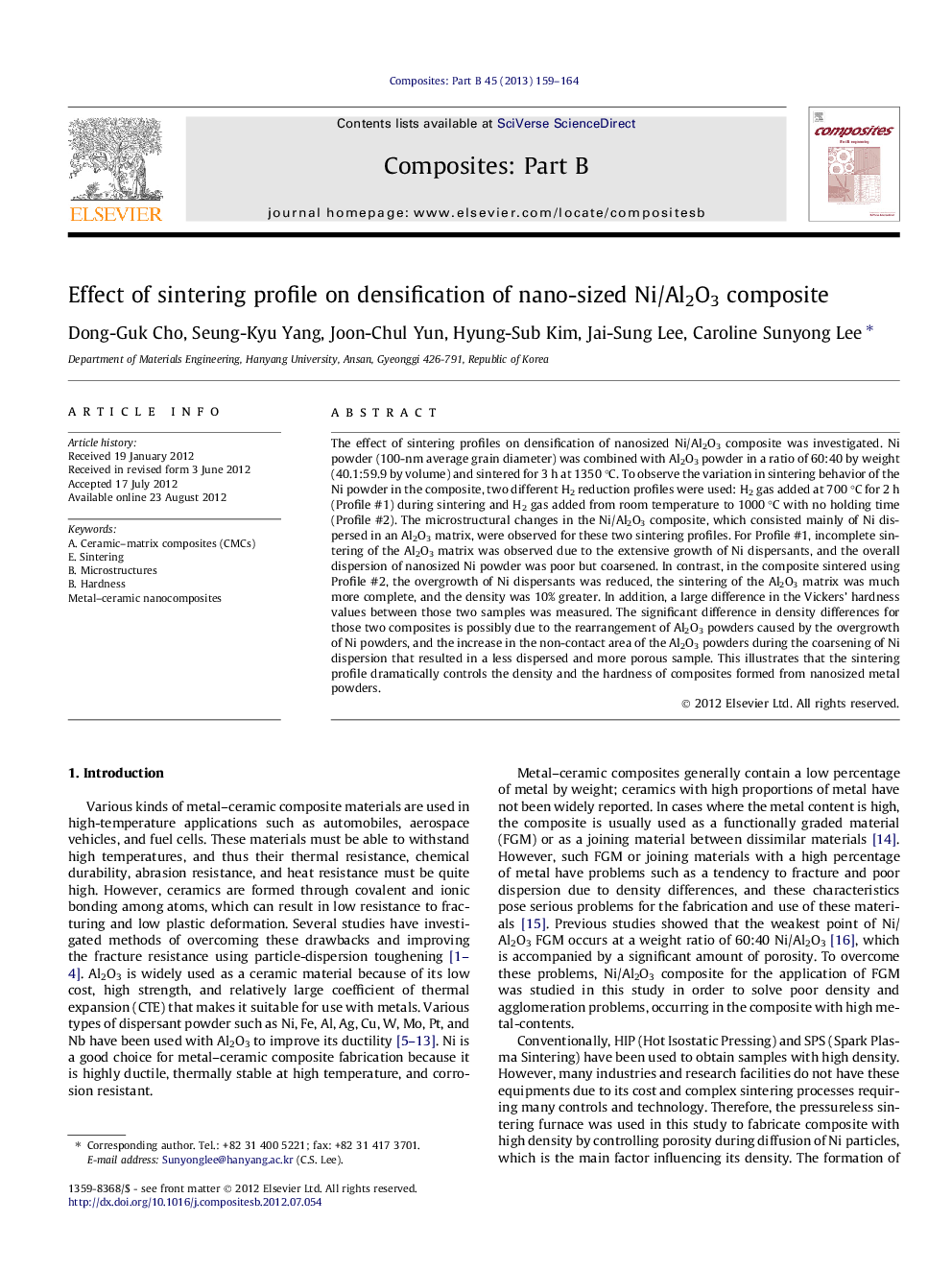| Article ID | Journal | Published Year | Pages | File Type |
|---|---|---|---|---|
| 818881 | Composites Part B: Engineering | 2013 | 6 Pages |
The effect of sintering profiles on densification of nanosized Ni/Al2O3 composite was investigated. Ni powder (100-nm average grain diameter) was combined with Al2O3 powder in a ratio of 60:40 by weight (40.1:59.9 by volume) and sintered for 3 h at 1350 °C. To observe the variation in sintering behavior of the Ni powder in the composite, two different H2 reduction profiles were used: H2 gas added at 700 °C for 2 h (Profile #1) during sintering and H2 gas added from room temperature to 1000 °C with no holding time (Profile #2). The microstructural changes in the Ni/Al2O3 composite, which consisted mainly of Ni dispersed in an Al2O3 matrix, were observed for these two sintering profiles. For Profile #1, incomplete sintering of the Al2O3 matrix was observed due to the extensive growth of Ni dispersants, and the overall dispersion of nanosized Ni powder was poor but coarsened. In contrast, in the composite sintered using Profile #2, the overgrowth of Ni dispersants was reduced, the sintering of the Al2O3 matrix was much more complete, and the density was 10% greater. In addition, a large difference in the Vickers’ hardness values between those two samples was measured. The significant difference in density differences for those two composites is possibly due to the rearrangement of Al2O3 powders caused by the overgrowth of Ni powders, and the increase in the non-contact area of the Al2O3 powders during the coarsening of Ni dispersion that resulted in a less dispersed and more porous sample. This illustrates that the sintering profile dramatically controls the density and the hardness of composites formed from nanosized metal powders.
